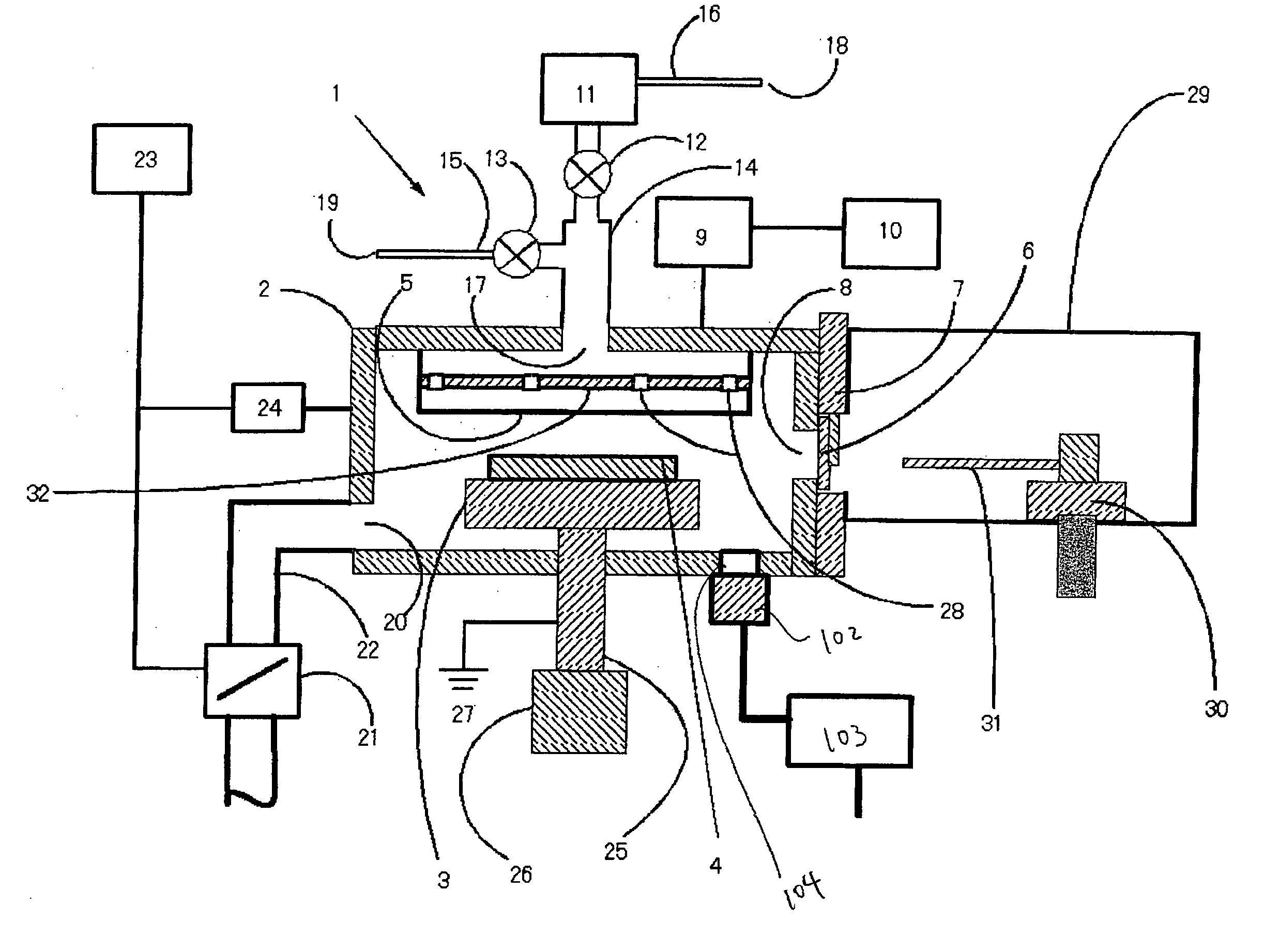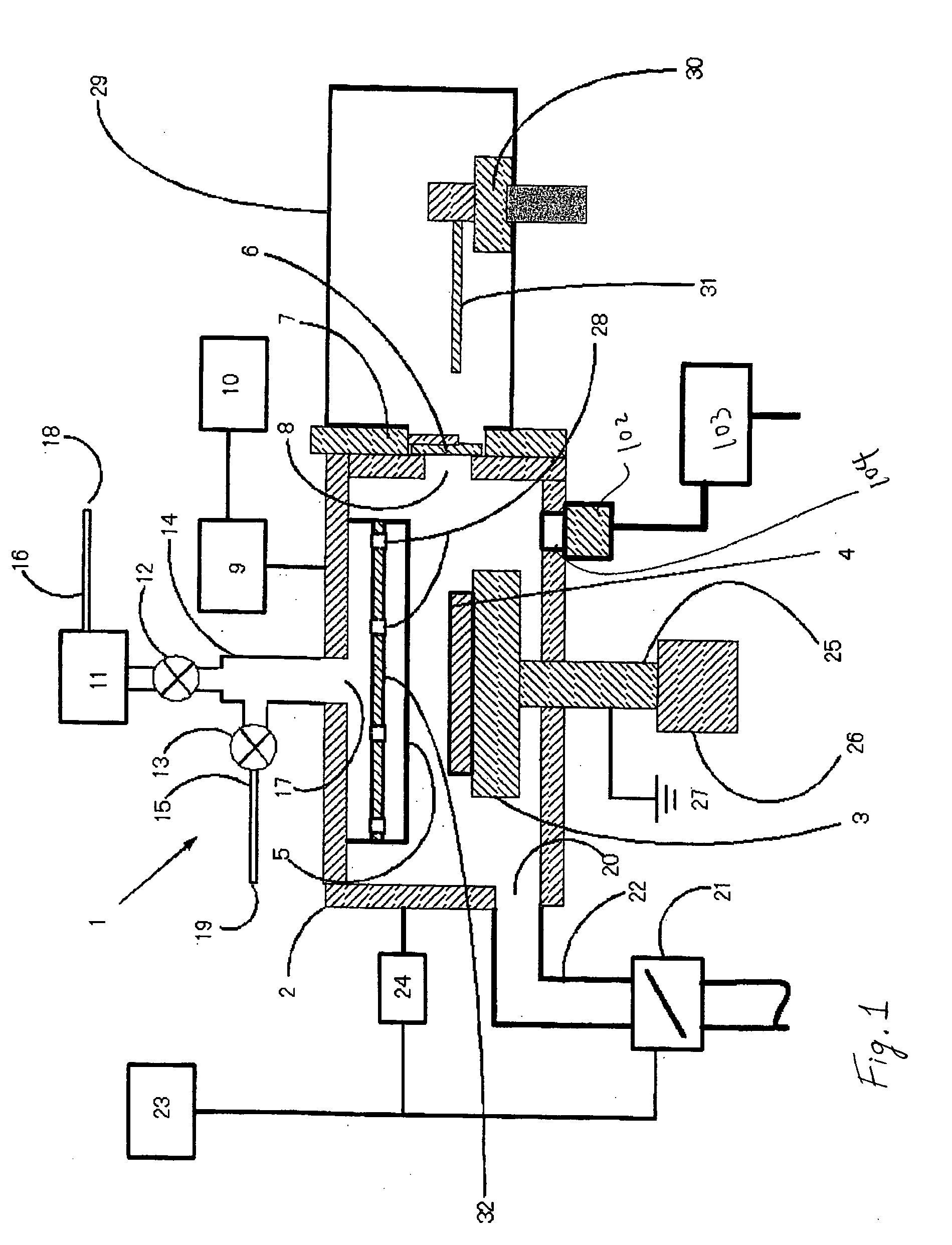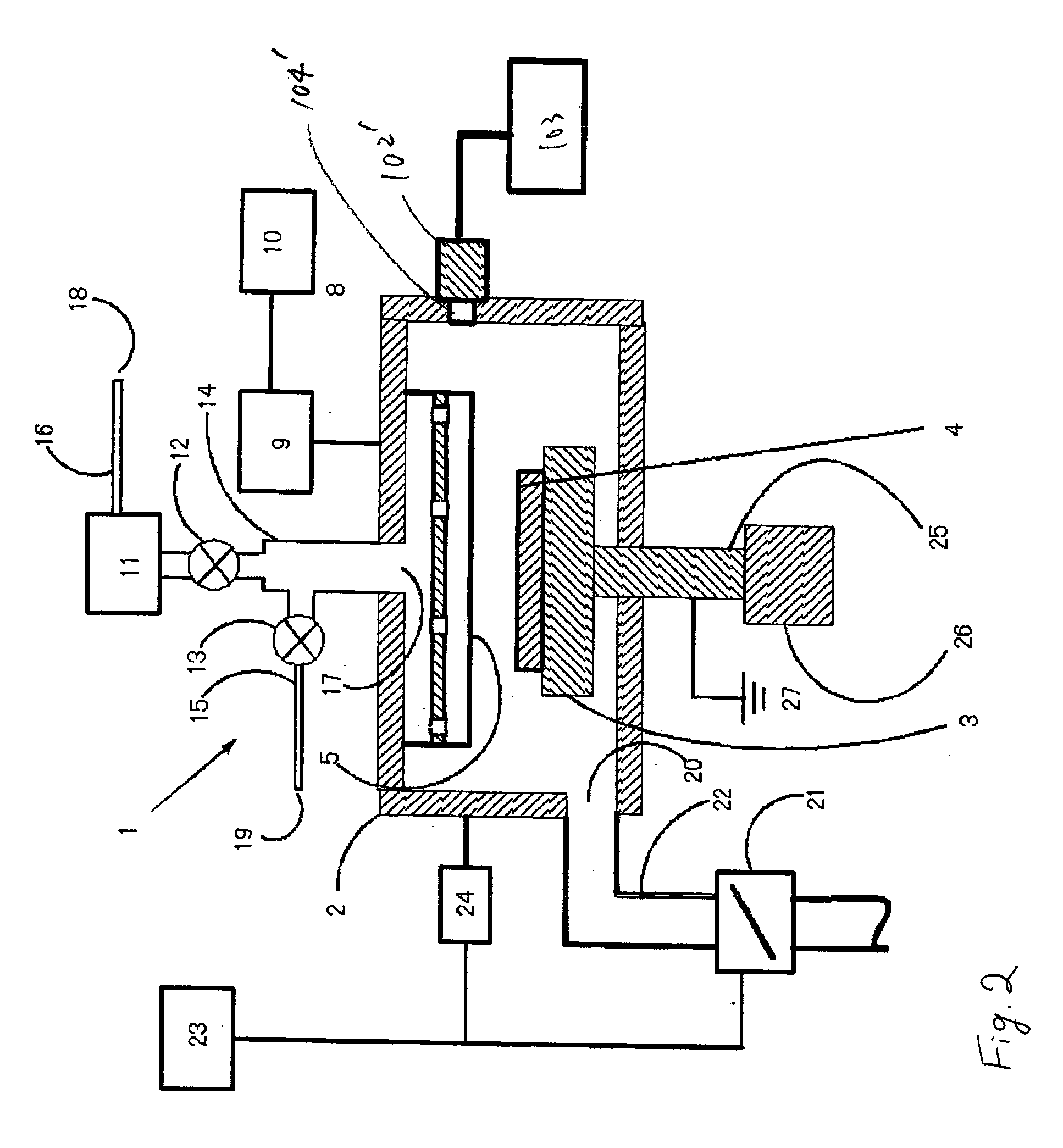Semiconductor-processing apparatus provided with self-cleaning device
a technology of self-cleaning and semiconductor processing equipment, which is applied in the direction of hollow article cleaning, fluid pressure measurement, instruments, etc., can solve the problems of increased operation cost, damage to the surface of electrodes, and defect in manufactured semiconductor circuits
- Summary
- Abstract
- Description
- Claims
- Application Information
AI Technical Summary
Benefits of technology
Problems solved by technology
Method used
Image
Examples
embodiments
[0115] Film formation was executed using a CVD apparatus shown in FIG. 1. 250 sccm of TEOS (250 cc per 1 min, 0° C., 1 atm) and 2,300 sccm of oxygen were supplied into a reactor 2; while maintaining a pressure inside the reactor 2 at 400 Pa, by applying 13.56 MHz radio-frequency power at 650 W and 430 kHz radio-frequency power at 500 W to the showerhead 5, a plasma discharge zone was formed between the susceptor on which a φ300 mm silicon wafer is placed and the showerhead 5. As a result, in 40 sec., a 500 nm thick silicon oxide film having uniformity ±1.5% (a value obtained by measuring a film thickness of a 500 nm thick silicon oxide film grown on the silicon wafer at 49 points and dividing a difference between the maximum value and the minimum value of measured values by ½ of an average value of all measured values and expressing it in percentage) was able to be formed on the silicon wafer.
[0116] Upon completion of a thin film formation process, the valve 13 was closed and simul...
PUM
 Login to View More
Login to View More Abstract
Description
Claims
Application Information
 Login to View More
Login to View More - R&D
- Intellectual Property
- Life Sciences
- Materials
- Tech Scout
- Unparalleled Data Quality
- Higher Quality Content
- 60% Fewer Hallucinations
Browse by: Latest US Patents, China's latest patents, Technical Efficacy Thesaurus, Application Domain, Technology Topic, Popular Technical Reports.
© 2025 PatSnap. All rights reserved.Legal|Privacy policy|Modern Slavery Act Transparency Statement|Sitemap|About US| Contact US: help@patsnap.com



